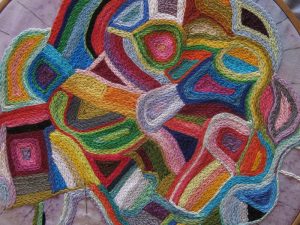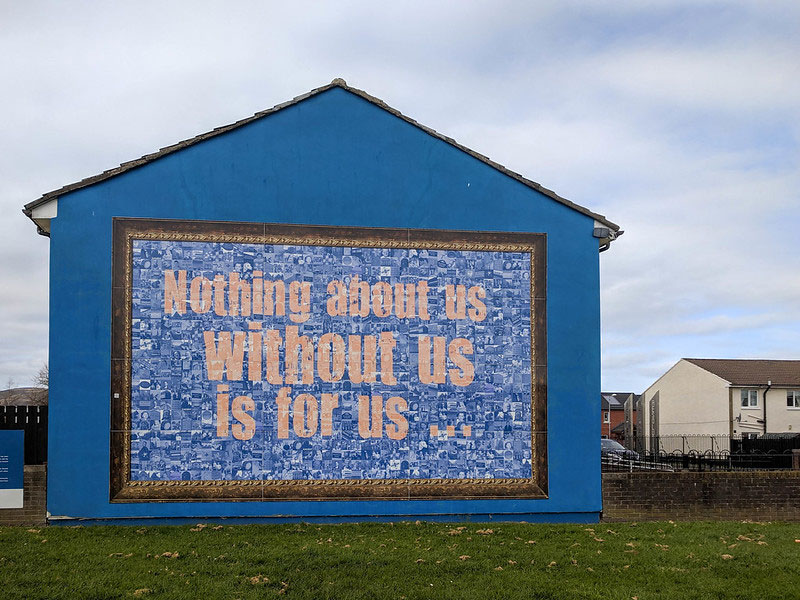If you listen to public radio and television with any regularity, you will probably recognize the call letters WGBH. A pre-eminent member of the national network of public media stations, WGBH, a nonprofit, has produced a myriad of documentaries and series that have gained national prominence. The organization is significantly influential—the way it frames and characterizes scientific, cultural, political and social issues has an effect on the way we think and talk. This is true of media outlets in general—and as U.T. Saunders commented, “We don’t pay enough attention to the enormous power the media shares with politicians in shaping public opinion.”
So when in 1995 WGBH placed an advertisement for a documentary in the television guide that many in the station itself felt was racially offensive, it placed the entire system on high alert—Marita Rivero, a vice president at WGBH said, “We were just stunned! The television schedule comes out on Sunday and the ad was on the page for Thursday. Every day took us closer to people in our area turning the page and seeing it. How could this type of material have gotten by all of our checks and balances?” Worse, this was another incident within a short period where something deemed racially insensitive by people of color had occurred at the station.
“The strength from which we moved was that our president was also energetically appalled. He basically said, ‘This doesn’t feel like ’GBH to me. We will do the work that’s required to figure out what’s wrong’,” shared Marita. This moved him to charge his senior management team to identify a process and appropriate resource support for addressing the problem.
Over the course of the resulting process, the organization would find that this relatively small incident was indicative of a more widespread problem. Eventually, with the help of consultants, the senior management team involved much of the rest of the organization in dialogue over the source of this problem.
In the process of searching for consulting support to help devise a way of better understanding and addressing the problem, the senior team began to better refine what they saw as problematic and what they wanted as potential outcomes. As they were figuring out whom they wanted to work with, they decided to eschew the more traditional diversity training approach. They instead selected a consultant team that proposed to engage a large segment of population in a dialogue to help clarify the issues and develop ways to address them. They hired U.T. Saunders and his colleagues as consultants, a team that had facilitated a number of diversity projects with major media outlets in the area.
The process was structured to engage three groups of 12-15 people each. One group was senior managers, one was people of color in the system, and one was a women’s group—nearly 45 people altogether. All the major departments were represented. People with formal and informal authority—people who would speak their minds—were selected to participate. They were invited to a three-and-a-half-day workshop to be convened over two meetings. The event “brought emotion and intellect together,” said Marita. “It was designed to bring the thinking parts of us into play with the subconscious and emotional parts of us that we don’t often recognize.”
“What we liked about the format,” she continued, “was that it provided enough structure to contain and direct our work, and enough openness to freely and meaningfully engage the large cast of vocal and thoughtful participants at
a level of depth we could never have fully imagined beforehand. We knew we wanted to do something that was substantive and real, though, and I daresay no one there would deny we did do just that.”
Sign up for our free newsletters
Subscribe to NPQ's newsletters to have our top stories delivered directly to your inbox.
By signing up, you agree to our privacy policy and terms of use, and to receive messages from NPQ and our partners.
There were many powerful moments and lots of rich dialogue in that meeting. Coworkers who had previously related in only a professional and often a hierarchical manner got a chance to sense hitherto unrecognized layers of experience and meaning. People began to see each other’s human vulnerability and how well-intended management could miss important interpersonal issues.
But there was more going on than simple interpersonal problems. At ’GBH, as in many other media institutions, most of those making critical editorial decisions were white. “At one point during a conversation about the culture at the station that progressed to a heated dialogue about who gets to make decisions on content,” U.T. remembered, “a senior producer stood up out of turn to protest the idea that a black person needed to be involved in editorial decisions about content that had to do with black people.”
The thing was, Marita reflected, that “journalists are taught to believe in their judgment. For someone to walk in and question your judgment is significant. You are paid for your judgment and here is a group saying not so much that your judgment is flawed, but that your judgment is subjective and shaped by your background and experience. There is no real objectivity. I remember making a window with my fingers and saying, ‘Maybe we all think that we are looking at the world correctly when we see through this lens—but what if the right lens for looking at the situation is really [as she turned the little rectangle of her fingers] like this? You just don’t have the lens turned the right way.’ And this was the image that some people later told me they retained—maybe because a lens is so deeply a part of our world.”
“It was a war of dialogue, if there is such a thing,” U.T. recalled. “It was powerful because there were compelling arguments. People defended their positions—but they also listened. Other previously buried concerns about power and exclusion got mixed in as well.”
“And it was only the beginning of the dialogue,” said Marita. “That’s one of the harder lessons we learned. This work is never done completely. You have to work on it in cycles; it’s a spiral—a process. That was new language here, because we are so project oriented. We think up a program, get funding for it, begin it and finish it. Here we have to work on the issues until we have exhausted things, put elements down for a while and then pick them back up and work on them again. The brilliance of that retreat was that some light came into a difficult area and went to the heart of the matter… and if you are an honest player, you cannot pretend that the light never came through the door. Thankfully we had a room of honest and intelligent players who want to be on the right side of equity and justice. Even when we deny an insight immediately, it keeps coming back—because once you really see something, you know it.”
The good people at WGBH are just preparing to circle back around to the work that they started on the retreat seven years ago. They have made strides. Their boards (of trustees and overseers) are more diverse, as is their community advisory board. There are more senior managers of color, but they “still go up and down” in terms of the editorial representation, said Marita. “Once we stopped the more active and intense work three years ago, we drifted a bit. The president recently looked at it and created new action in this area, and we are just putting the oars back in the water. That’s U.T.’s metaphor.”
U.T. chimed in, “That’s right—attention to diversity requires ongoing vigilance. As soon as you stop rowing, you’ll find you’ve drifted somewhere that you weren’t going. It requires constant rowing especially if the leadership is relatively homogeneous. If you start with more heterogeneous leadership or if you achieve it, things are different. But with homogeneous leadership of the dominant group, other matters become priority and this issue recedes.”
“Our work in media institutions,” UT concluded, “held enormous importance for me. How the issues of people of color or those outside the mainstream of opportunity are framed and characterized in the media has everything to do with how public opinion is formed and what we will then tolerate in public policy. WGBH is clearly at the leading edge, and for them to understand that technical expertise alone is not sufficient to determine what should get said and how it should be said about a group of people is a step in the right direction.”













